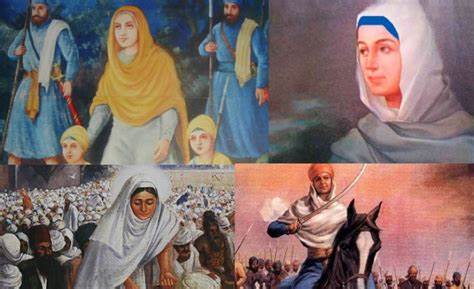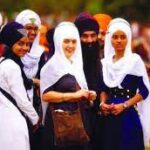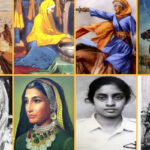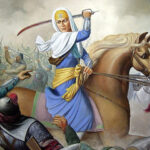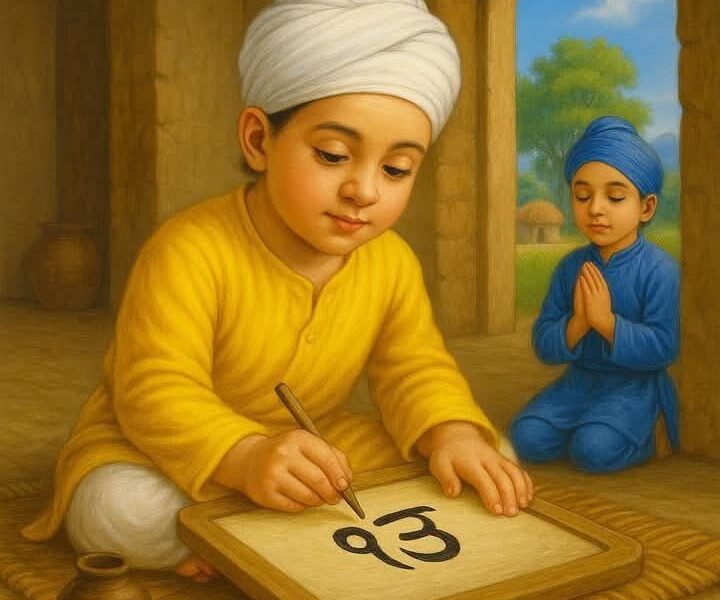Sikh women have been and always will continue to be the Khalsa Panth’s core. Their generosity is unrivaled anywhere on the planet. Indeed, because of the enormous duties put on them, this attribute has won them Divine attributes that their male peers might not even be capable of achieving in their lives.
Guru Nanak aimed for the prosperity of all, and in order to do so, he sought impartiality for all. It was critical to free the female from the male’s overpowering influence in order to achieve this goal. When one reads about the existence of some of the ladies throughout the Guru period, one learns how far the Gurus were capable of accomplishing their goal.
The Religious Texts of Sikhism make it quite clear that a Sikh woman was always recognized as an equatable to a man, with all of the rights and freedoms that a male has. She is thought to have had the same essence as a male and has the same rights to spiritual development. Sikh women are permitted to conduct religious gatherings, engage in Akhand Path (constant reading of the Holy Texts), conduct Kirtan, serve as Granthi (priest) or preacher, and engage in all spiritual, cultural, societal, political, and secular events without restriction.
Sikh women have played an important role in Sikh history, demonstrating that they are equal in terms of duty, commitment, suffering, and courage. Ethical integrity, compassion, and self-sacrifice are and will continue to be sources of inspiration. Women are the foundation of the Sikh religion’s past, heritage, and tradition, however little is documented about their enormous significance to the religion’s long history. The human race is made up of two halves: man and woman. A man gives birth to a woman, and a woman gives birth to a man. This mechanism is interconnected and interdependent on one another. Without a female, a man would never feel comfortable and full in life.
Bibi Nanaki
Guru Nanak’s eldest sister was Bibi Nanaki Ji. Mehta Kalu Ji and Mata Tripta Ji gave birth to her. Her mother’s hamlet of Chahal, presently in Pakistan’s Lahore region, was where she was born in 1464.
Guru Nanak wasn’t just an ordinary person, and Bibi Nanaki Ji was the first one to notice. Although Mehta Kalu Ji, Mata Tripta Ji, and others were outraged by Guru Nanak’s conduct, Bibi Nanaki Ji supported her brother in his quest. She was without a question Guru Nanak’s first Sikh and follower. Guru Nanak was never referred to be her brother; rather, he was referred to as her Guru throughout her life. It was clear from a young age that the siblings had a tight relationship. There are numerous stories about their genuine affection and her strong belief in her brother’s life goal.
Bibi Amro Ji
Guru Angad Dev ji’s daughter, Bibi Amro, was the Second Guru’s daughter. She was born in the village of Khadur Sahib in the district of Amritsar around 1532. Her parents, Guru Angad Dev ji and Mata Khivi, provided her with an early education and instruction. Guru Angad devoted a great deal of time to his children. He gave them the Guru Granth Sahib’s Gurmukhi script, that he had improved and simplified. Her father urged her to continue singing kirtan and to spread Sikhism to everyone she met.
Bibi Bhani ji
Guru Arjan Dev, the Fifth Guru’s mother, was Bibi Bhani. Guru Arjan Dev was undoubtedly raised as a model GurSikh. The first Sikh martyr was Guru Arjan Dev. Guru Arjan Dev produced the Adi Granth by compiling all of the previous gurus’ works and installing it at the Golden Temple, which is today known as The Guru Granth. Guru Arjan Dev finalized the Golden Temple’s construction.
Mata Gujri ji
During the seven-month battle of Anandpur in 1705, Mata Gujari ji was with her family. When Guru Gobind Singh refused to give up, hungry Sikhs appealed to his mother in the hopes of persuading her to depart knowing that the Guru would follow. Mata Gujari was essential in making the choice to abandon terrible circumstances, persuaded by false promises given by Moghul Emperor Aurangzeb. Mata Gujar Kaur, 81, took custody of her two baby grandchildren on the stormy eve of the departure from Anandpur.
